(I am posting this for entrant 008, Andy Gray. He’s a university student from Sydney, Austrailia)
AGC –Allambie Golf Club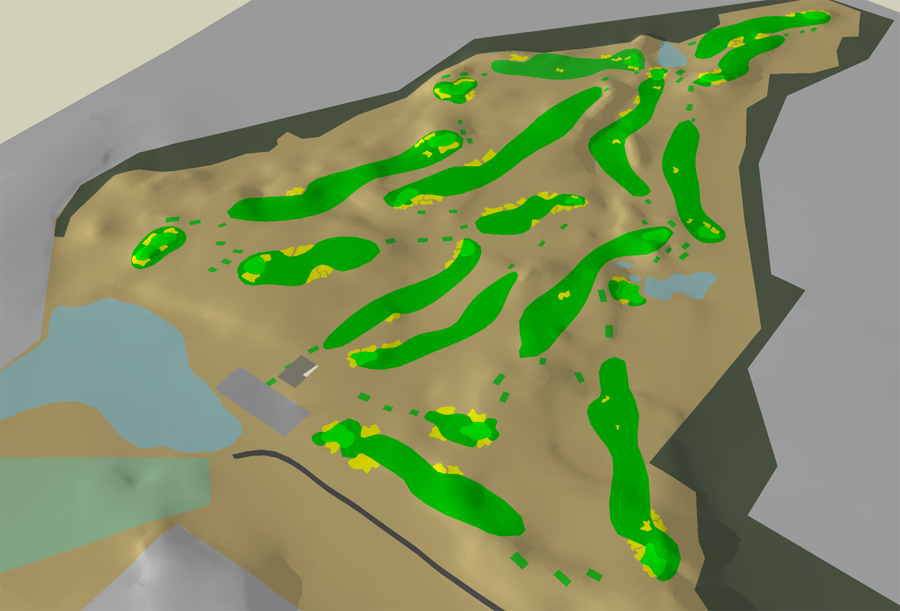
Allambie is the name of the suburb in which I grew up and live in Sydney. It is an aboriginal world meaning “peaceful place”. The meaning of the name is what I would hope my course would be.

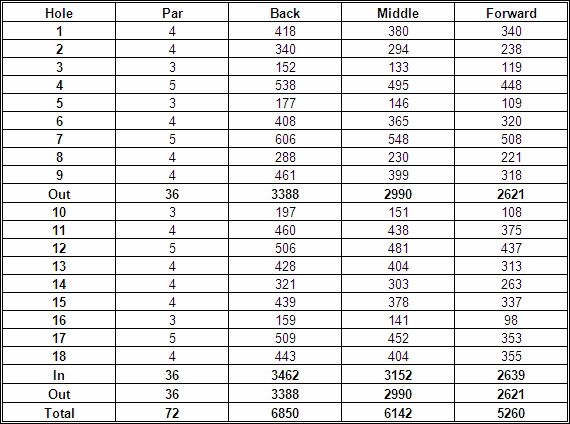
The intent of my design is as follows:
- To provide a fun, thought provoking, strategic and challenging course for all players.
- Room has been left for most holes to be lengthened if need be.
- The fairways were intended to be very wide, with most exceeding 60 yd in width.
- The greens are to hold interest for everyone, while occupying various terrains, i.e. knoll, bowls, hillsides etc.
- A walk able course with short green to tee walks and not too many uphill hikes.
- A limit on forced carries.
My favourite holes are as follows, and are explained in slightly more detail.
- Par 3: 3rd
- Par 4: 6th
- Par 5: 17th
All yardages are from the back tees. Note that earthmoving would have to be done, mostly around the greens in order to soften the contours.
Hole 1: Par 4 418yd
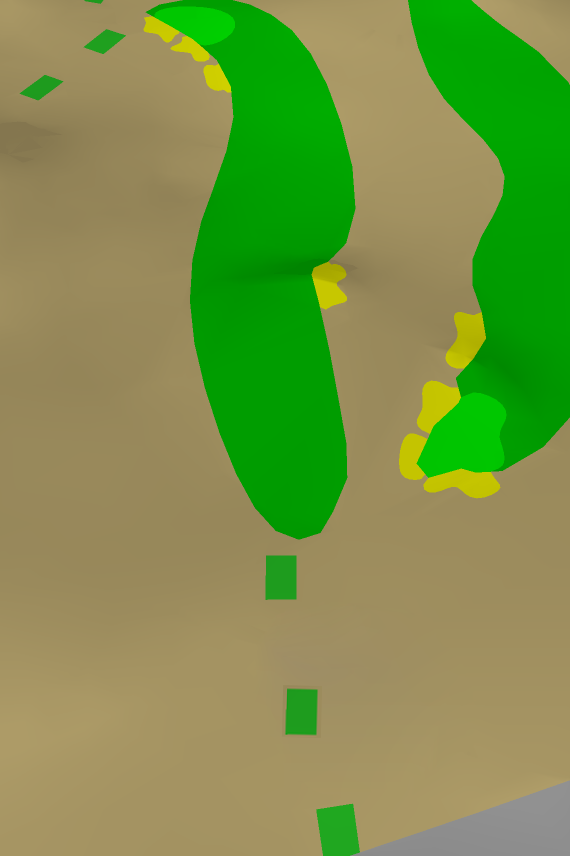
Wide open fairway with bunker guarding the best angle of approach to the green.
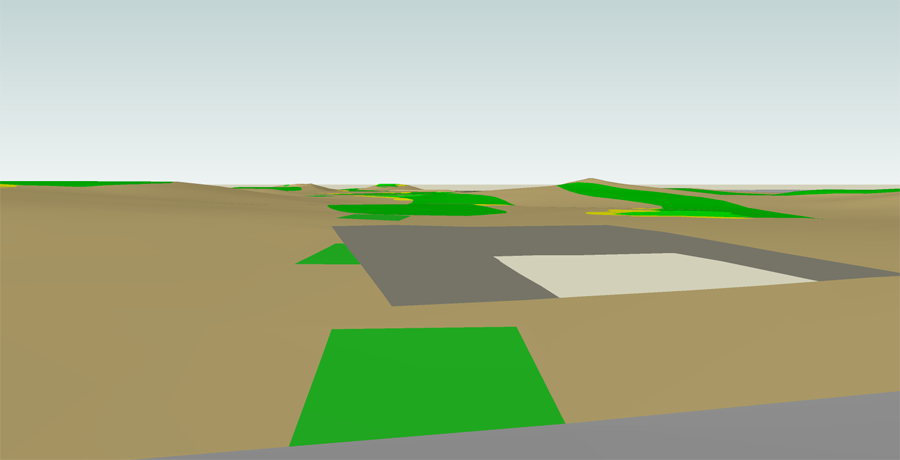
Those taking on the fairway bunker are rewarded with an un-obscured view of the green.
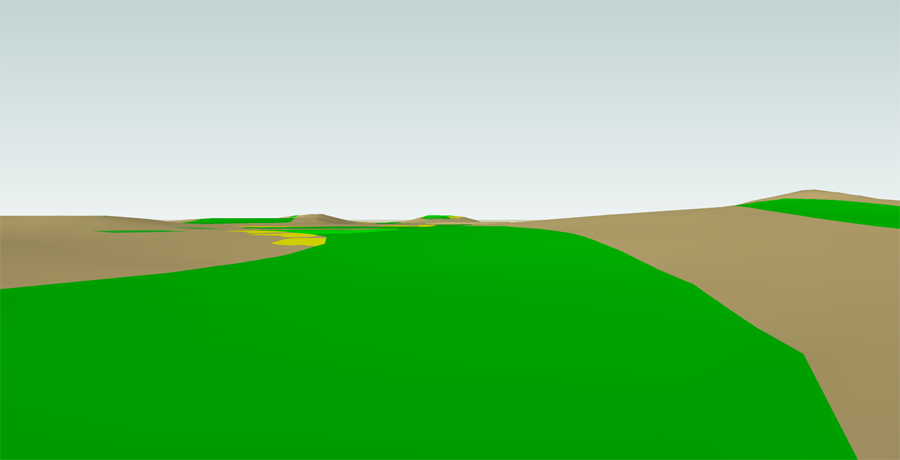
The safe option leaves an approach across the diagonal bunkers running across the fairway to the left of the green.
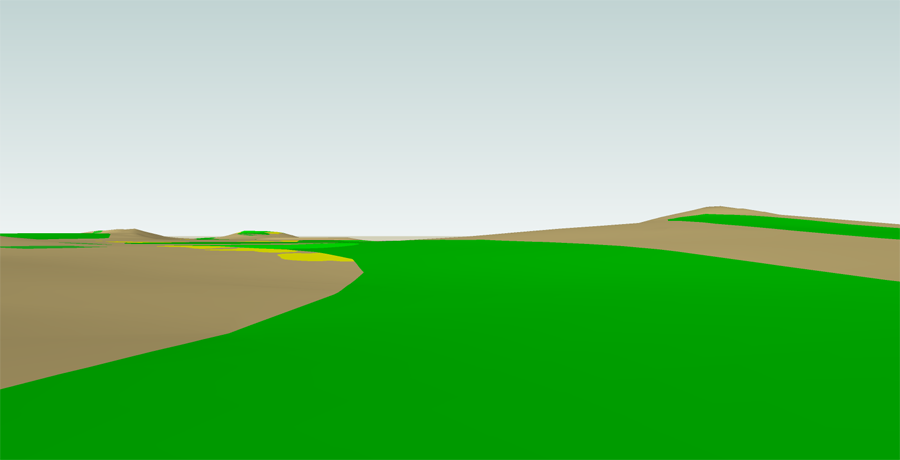
The green itself runs from high right to low left, and accepts running shots from the right, with the slope helping the ball to the left.
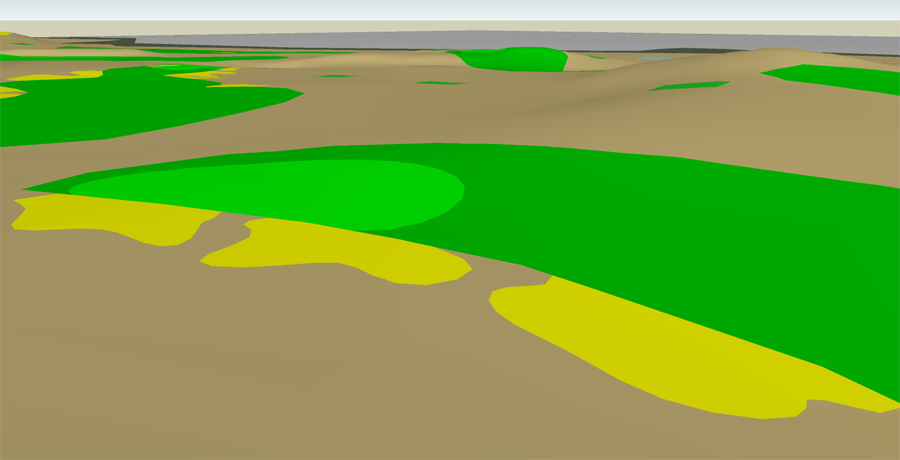
Hole 2: Par 4, 340 yd
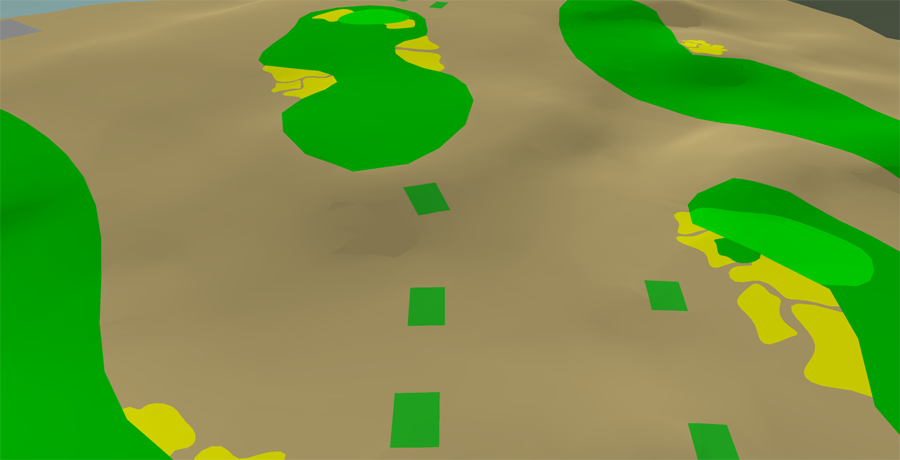
Huge fairway sloping right to left. Tee shot is blind up the hill. Challenging the left side bunkers bring the best approach to the green.
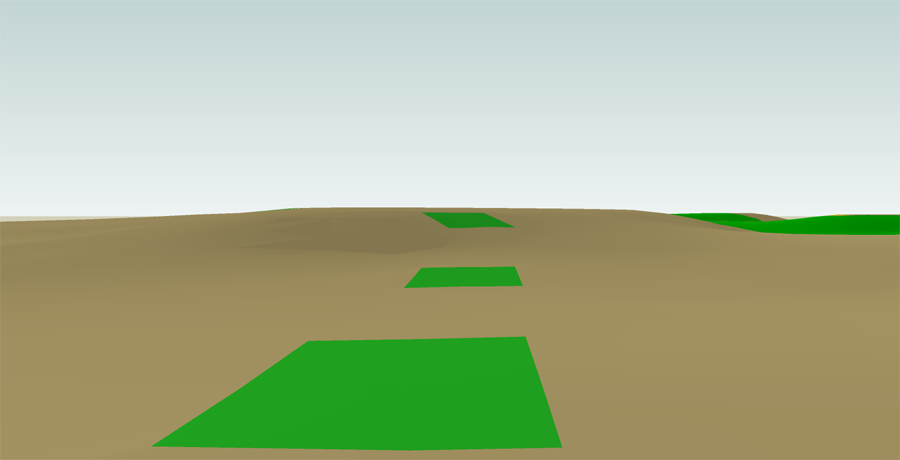
Approach from left leaves green open in front.

Approach from right is a tricky pitch or wedge over bunkers to a slightly crowned green.
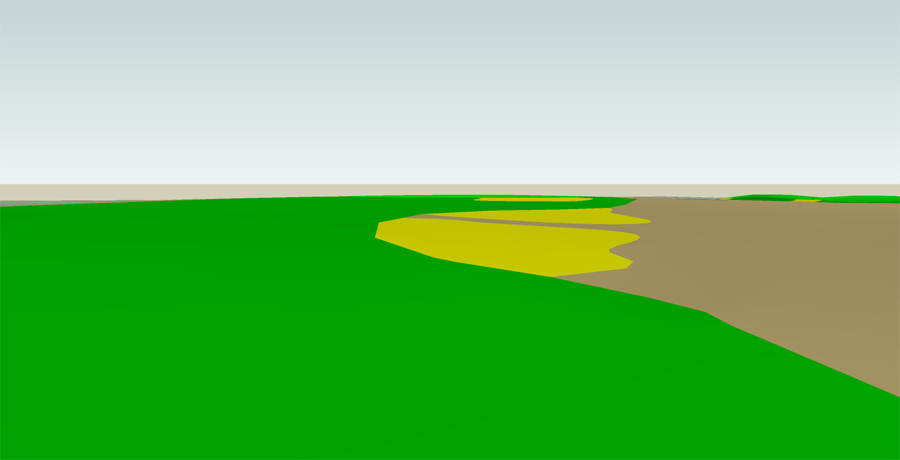
The green is slightly crowned and is guarded front right and back left by bunkers.

Hole 3: Par 3, 152 yd
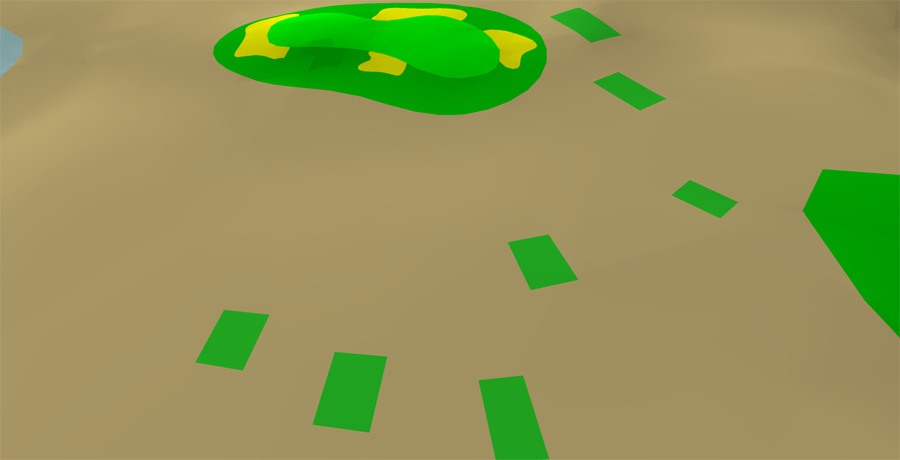
Tee shot plays across a depression to a green on the far hill.
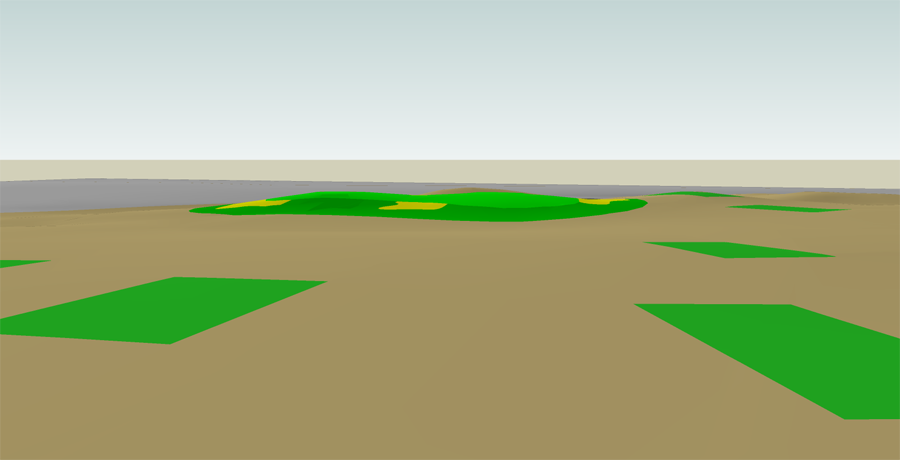
The large green is essentially two smaller greens, as it sits atop two hills with a depression running through the middle.
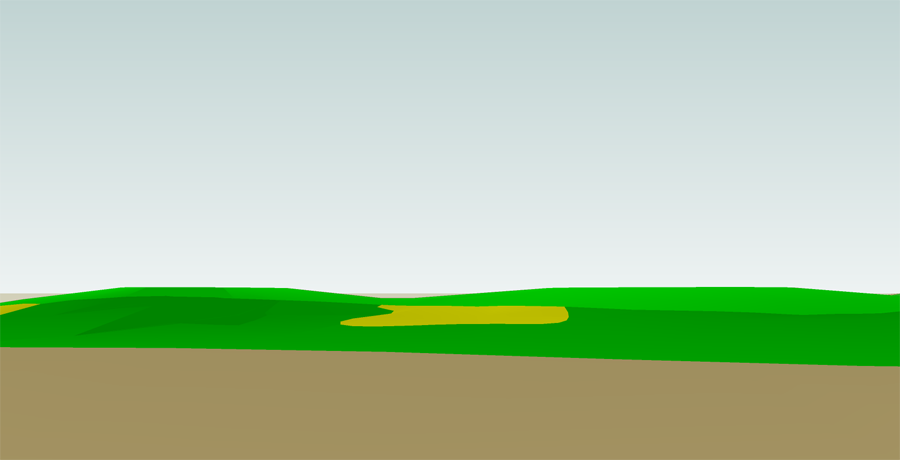
The right side is the larger of the two sides, and is also closer to the tee.
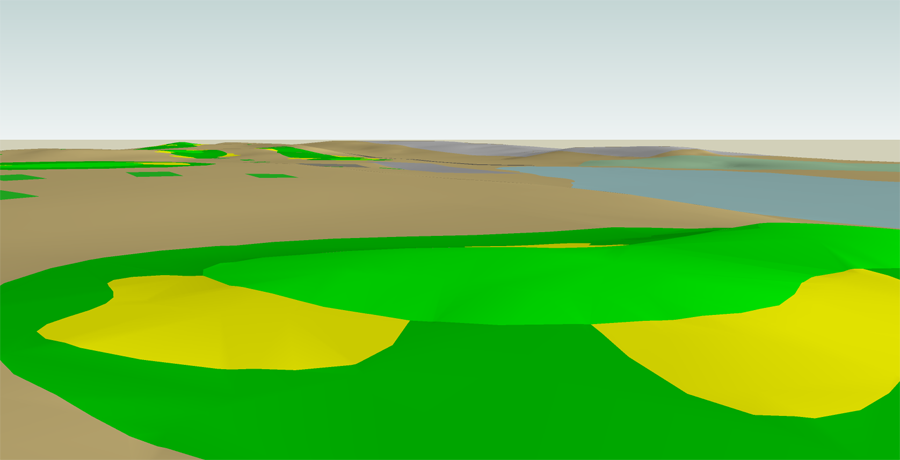
The left green sits on a knoll, with drop offs surrounding the green.
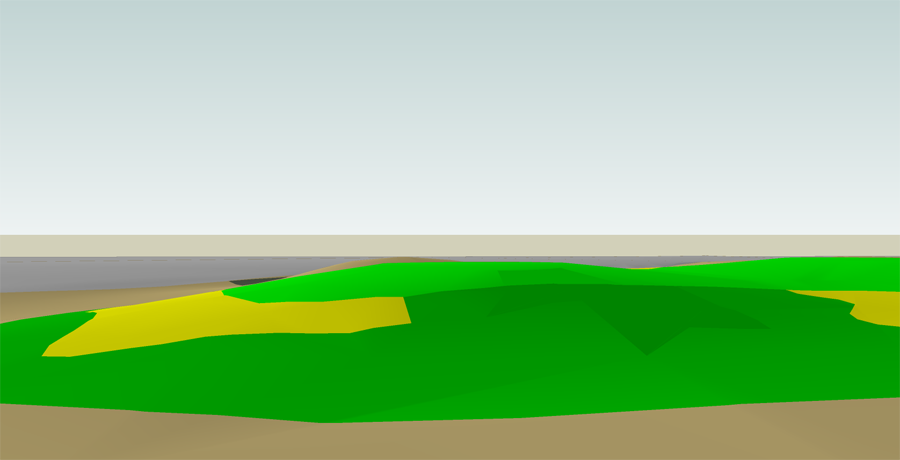
Hole 4: Par 5, 538 yd
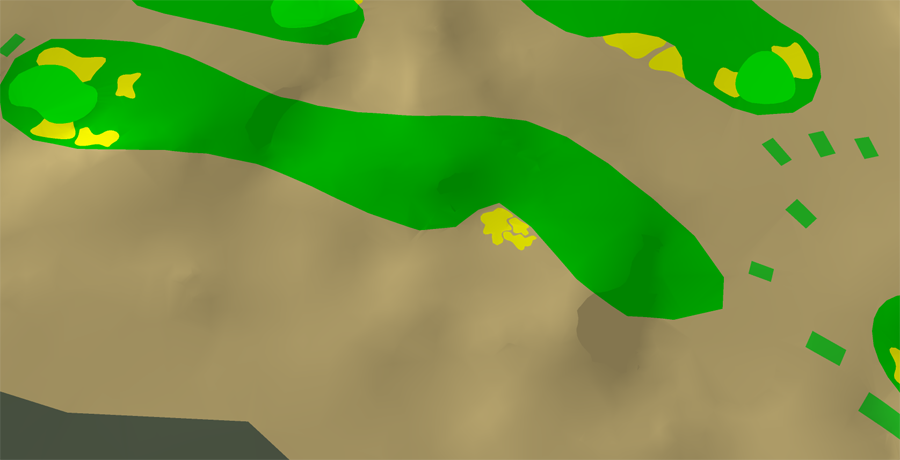
The 1st shot is played from a high tee to a fairway which is essentially a bowl. The left hill and bunkers protect the shortest route and the boost from the back of the hill.
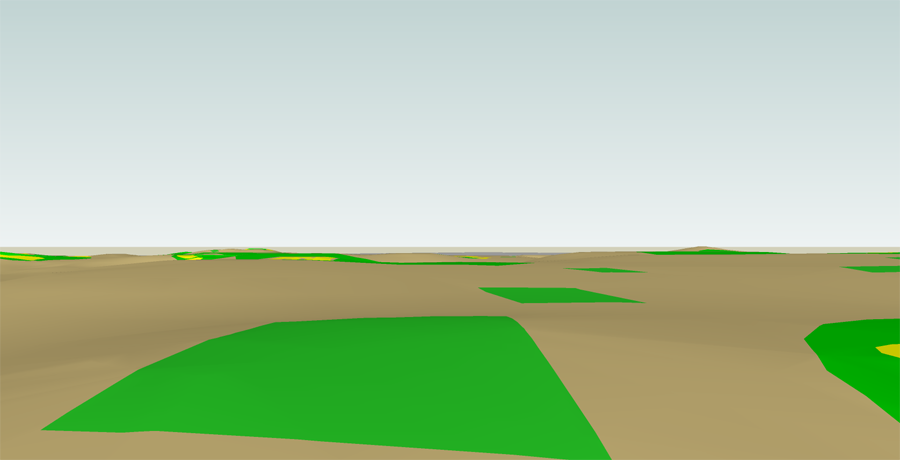
2nd shot is blind from the fairway bowl. The 2nd LZ is left bunkerless for this reason.
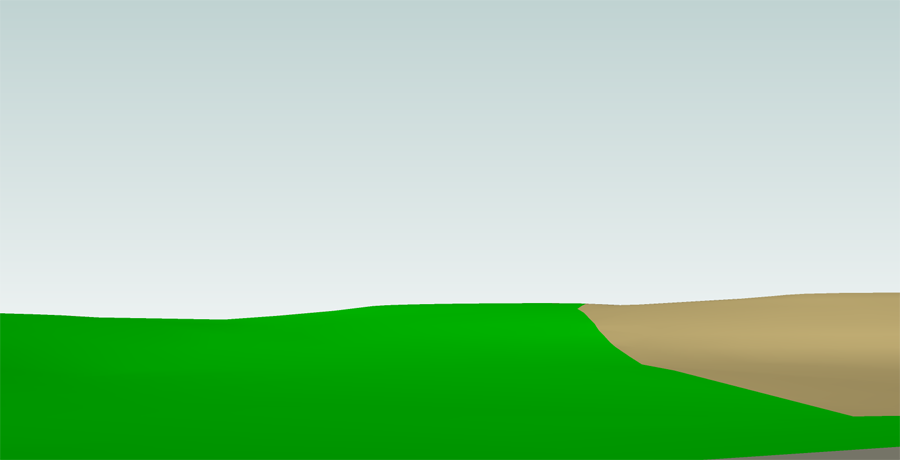
If the bunkered hill on the left is carried, the green is visible and within reach. However the hollow on the left of the 2nd LZ must be challenged.
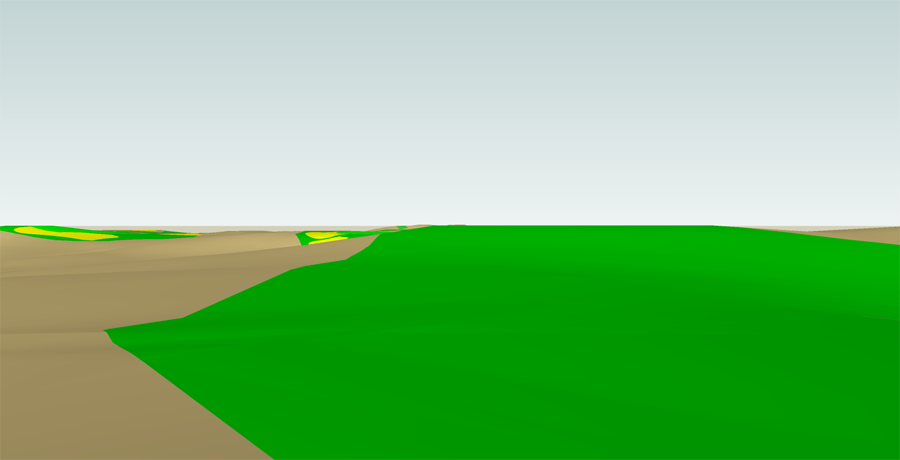
The approach from the left is usually blind due to the hollow that was previously mentioned.
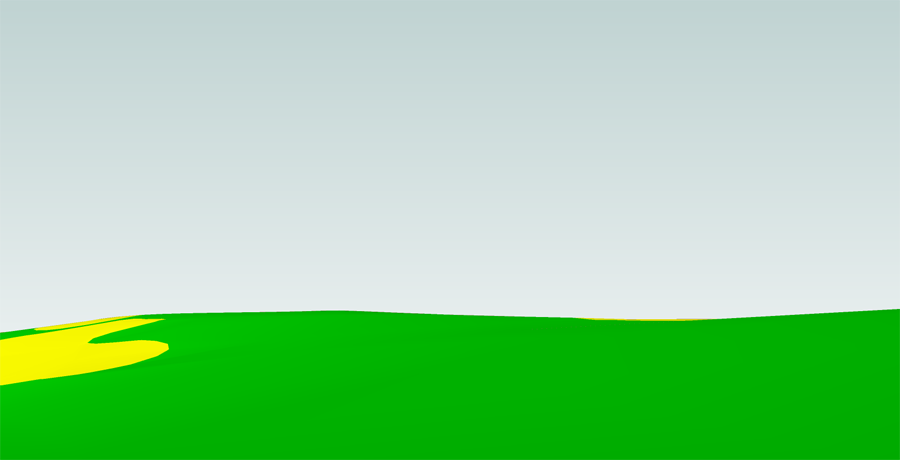
From the right, a delicate pitch over bunkers.
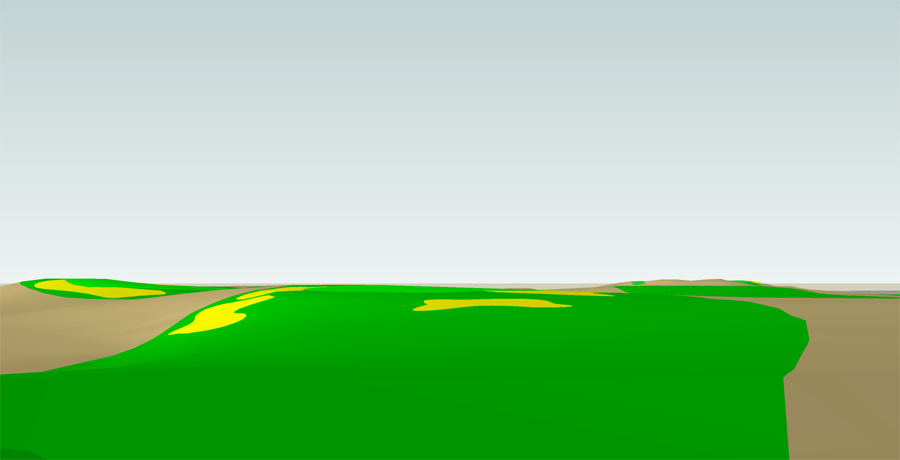
The green generally slopes left to right, helping balls to back right pin positions.
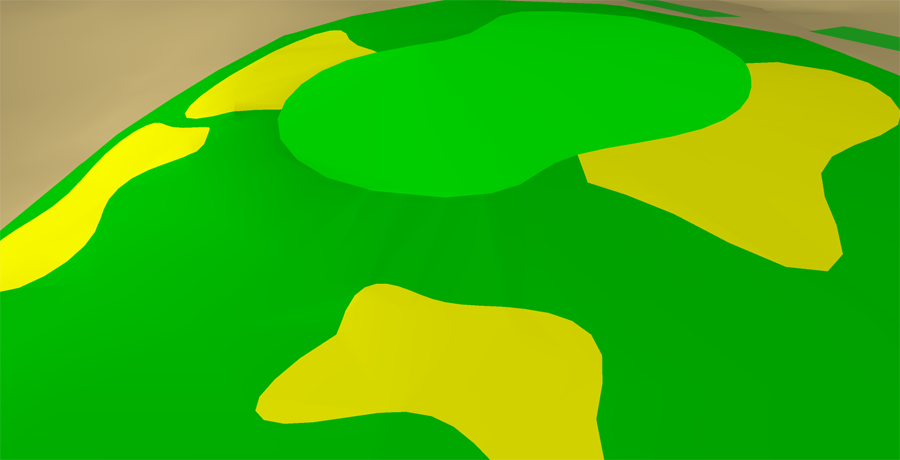
Hole 5: Par 3, 177 yd

The second par 3 is played from one hill to another with a depression to be carried.
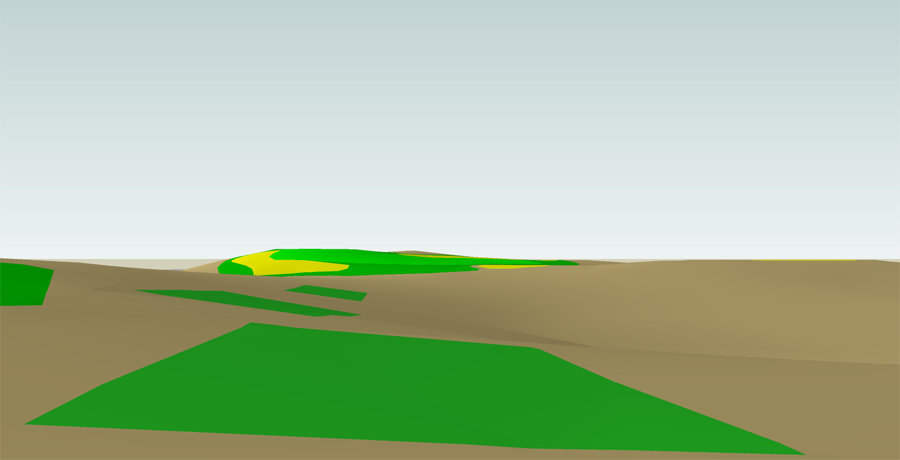
The green is sloped from back left to front right.
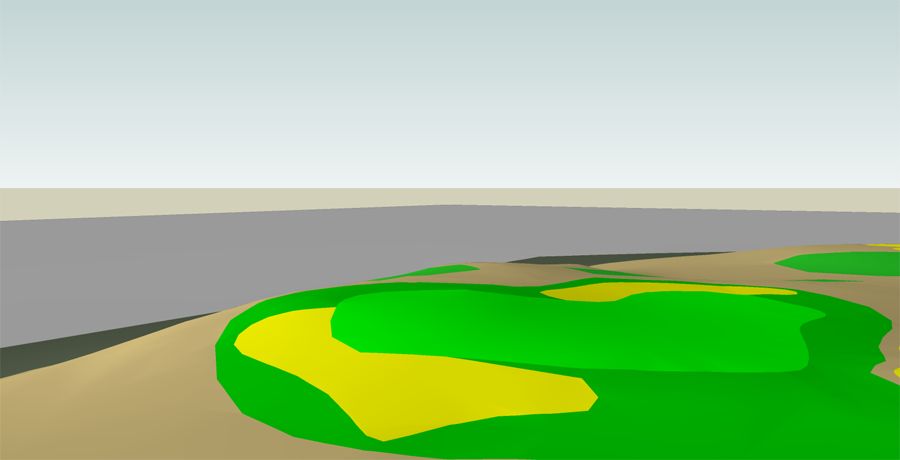
The bunkers short and right are 5-10 yd short of the green but give the illusion of being flush against the green from the tee.

Hole 6: Par 4, 408 yd
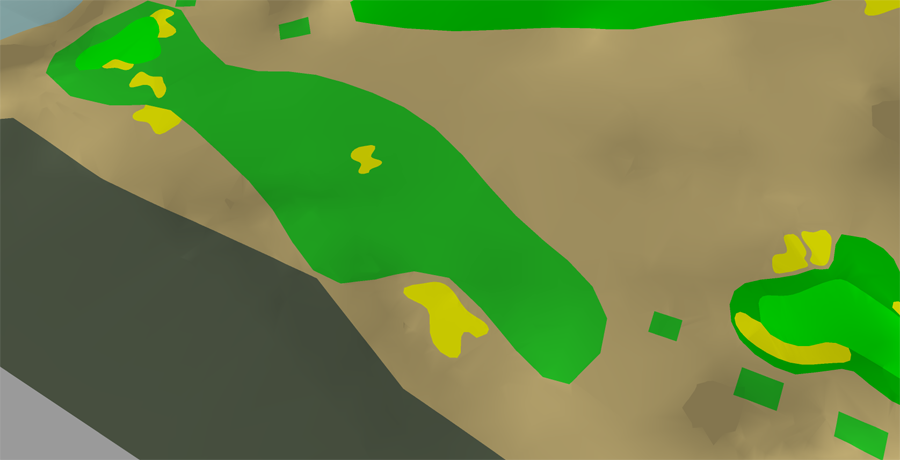
The tee shot is played to an extremely wide fairway, with a centre line bunker and a bunkered hill on the left. The left bunker does not seem in play, however it can be challenged to gain a boost down the left side of the fairway, which helps avoid the centre bunker.
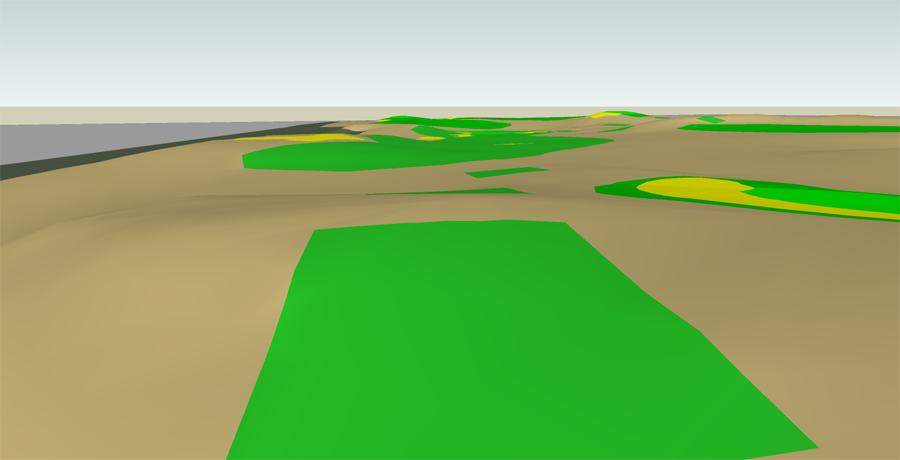
The tee shot to the right of the centre bunker gives a favourable view to the centre and centre-left portion of the wide green. The bunkers short and left of the green are not in play from this angle when playing to the centre of the green.

The tee shot to the left opens up the tightly bunkered right side of the green, and is also the desired line to use the hill to feed the ball to the left side of the green. While this opens up the right side of the green, the bunkers short and left of the green needs to be carried.

A bunker on the right and a fall off to the rear protects the right side of the green. It is best approached from the left side of the fairway.
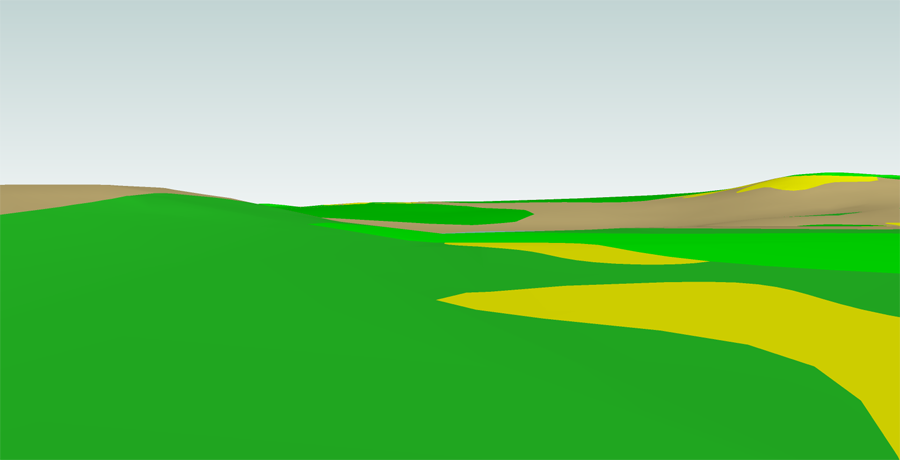
The left side is the smaller section of the green, and is fronted by a small bunker. There is a fall off to the rear. The bunker needs to be carried or negotiated in order to attack a left pin. The hill to the left, which is maintained as short grass, can be used to feed a ball into the green. The bunker short of this hill must be challenged to use the hill. Alternatively a draw from the right of the fairway can attack this pin.
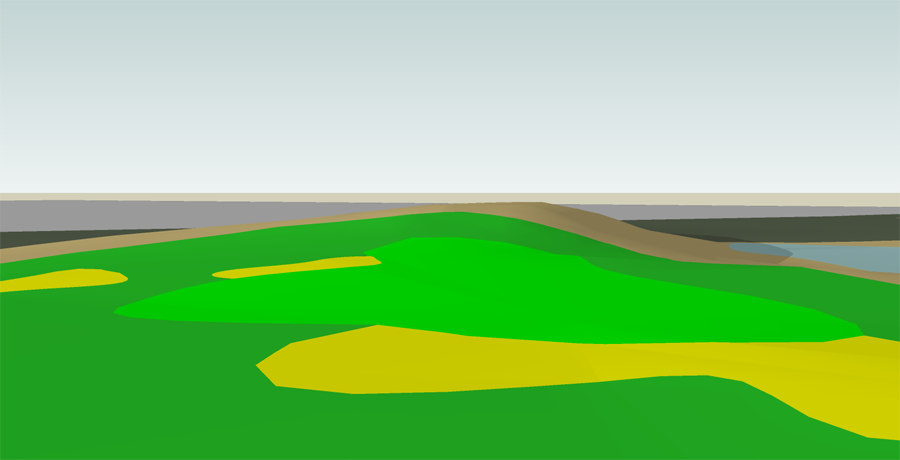
Hole 7: Par 5, 606 yd

The tee shot is played blind up and over a hill to a fairway. The fairway is wide with no bunkers due to the blindness of the shot.
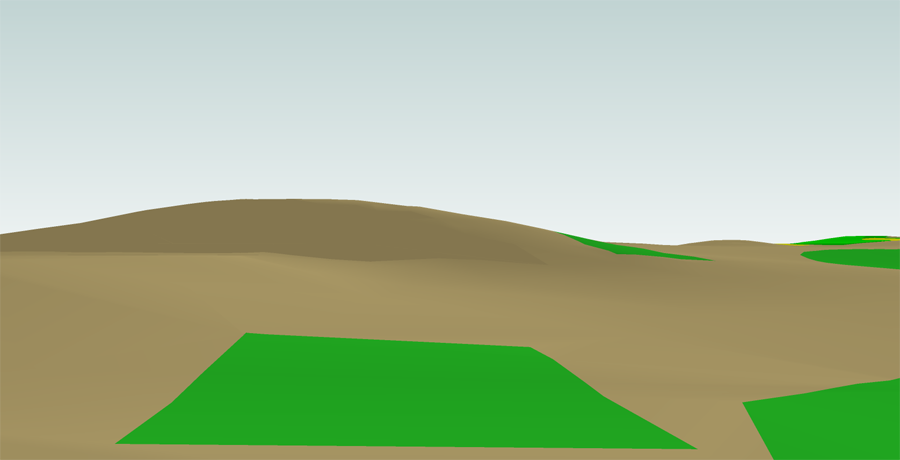
The safe option for the 2nd shot is to play to the left away from the right bunkers. The aggressive play will either flirt or carry the bunkers to open up the green.
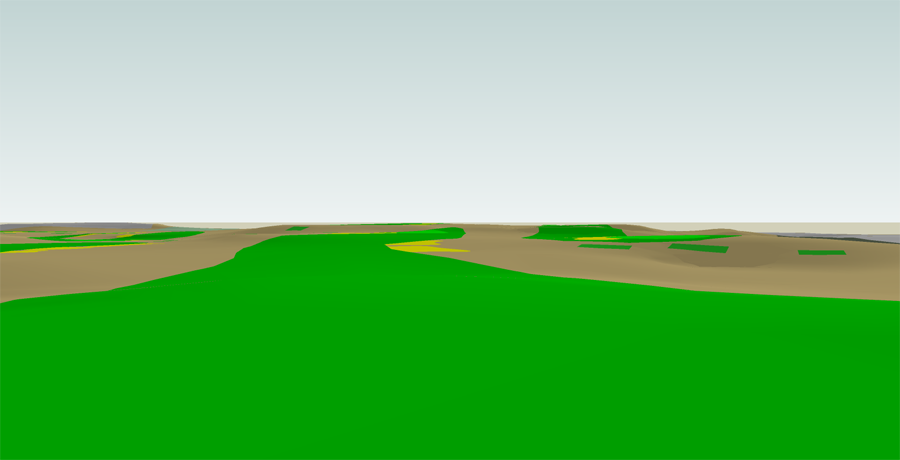
The approach from the left needs to carry the bunkers.
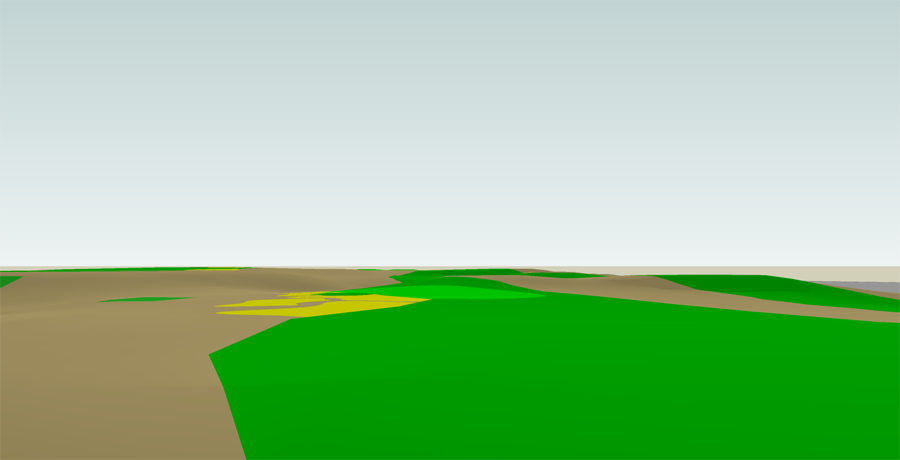
From the right the green is open and feeds balls to the left.

The green slopes right to left and away from the player toward the back.
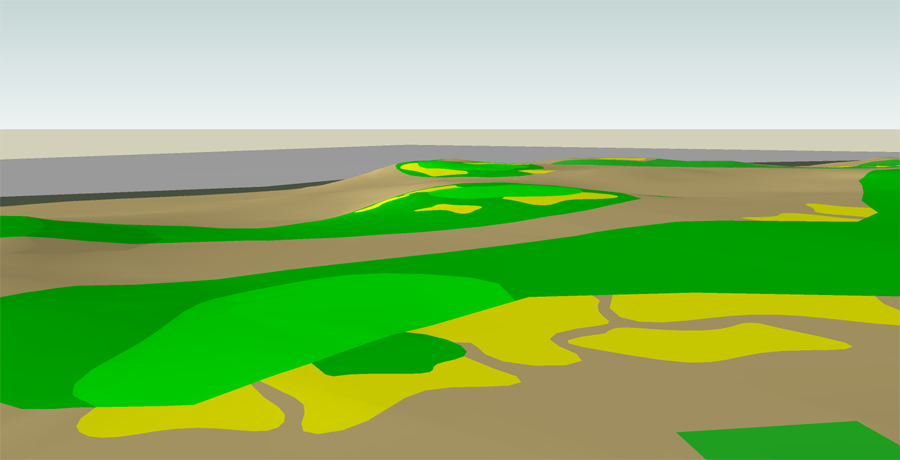
Hole 8: Par 4, 288 yd
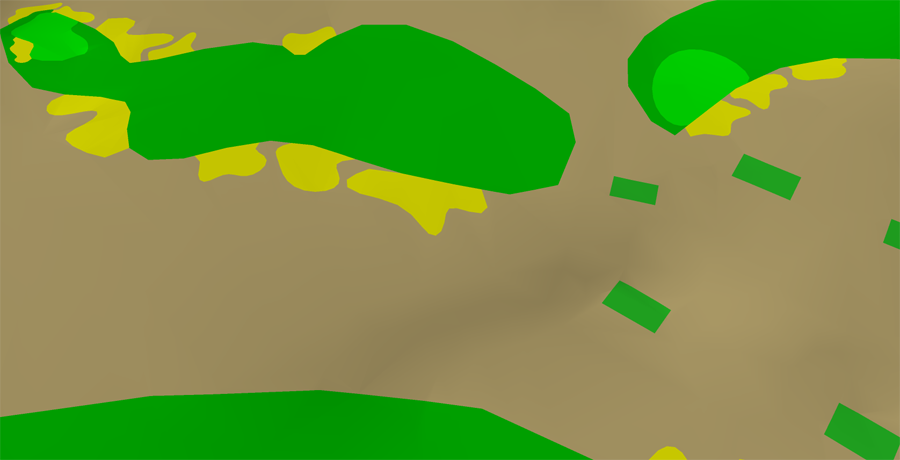
The tee shot is played from an elevated tee to a fairway which angles away to the left.
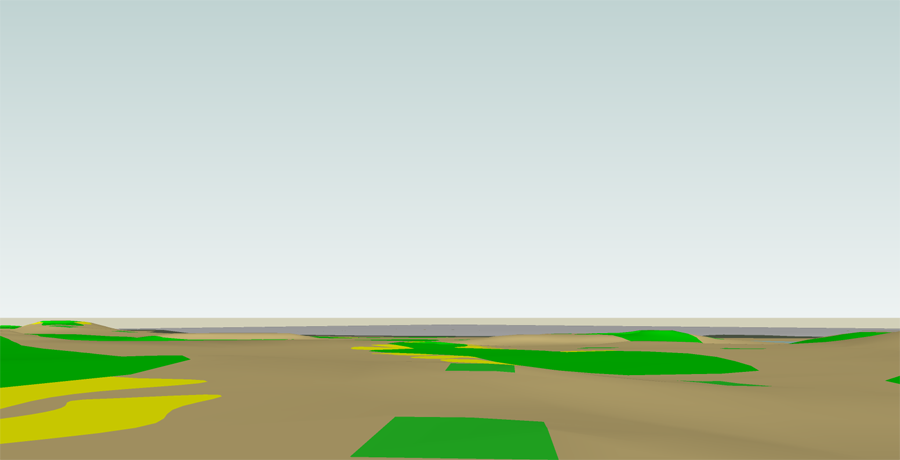
The approach from the right is precarious with the bunkers and fall off to the right. The green is also shallow from this angle.
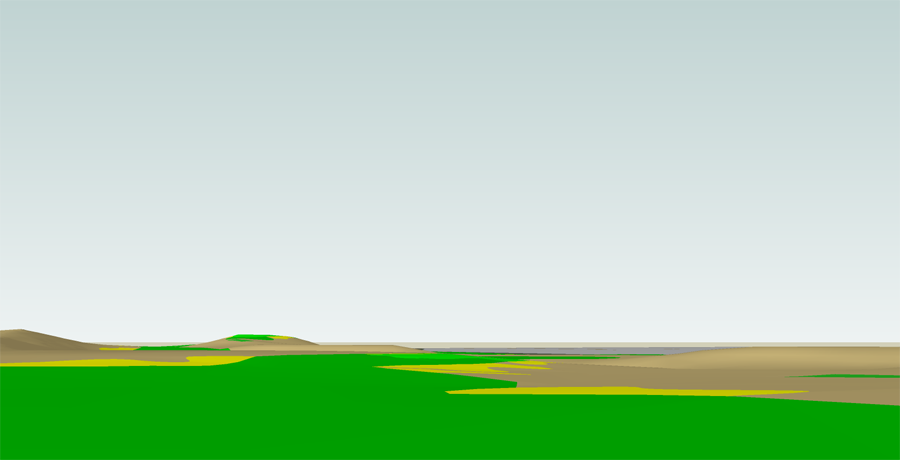
An approach from the left is clearly desirable.
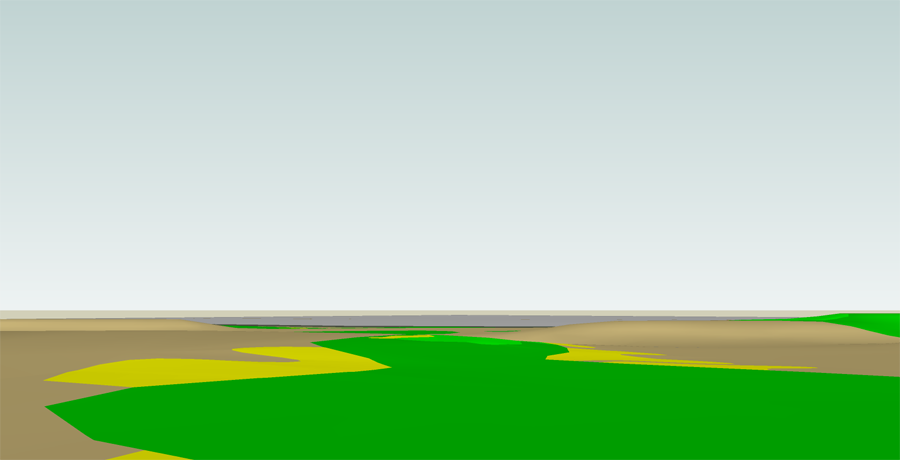
The green can be reached from the tee. The green itself angles to the right. The front right falls away with the slope kicking balls into the right bunker.

Hole 9: Par 4, 461 yd
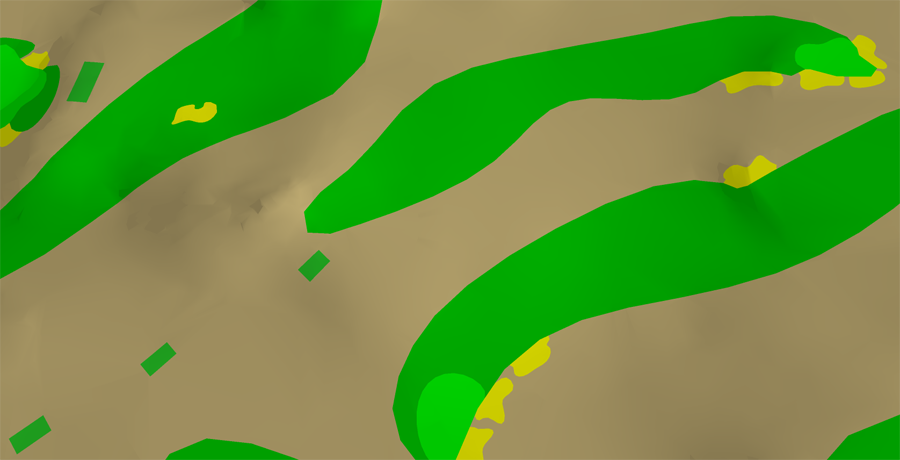
The tee shot is blind over another hill, while the fairway then runs away from the golfer adding extra distance to the tee shot. The fairway is wide and bunkerless.

The approach from the right, while shorter, must negotiate the diagonal bunkers that start short and right of this green and wrap around the back.
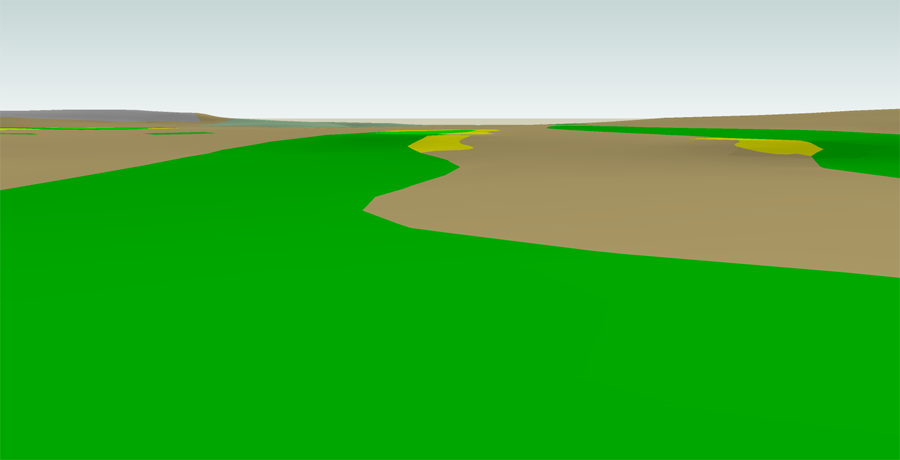
From the left, whilst longer, leaves the golfer with an open green.
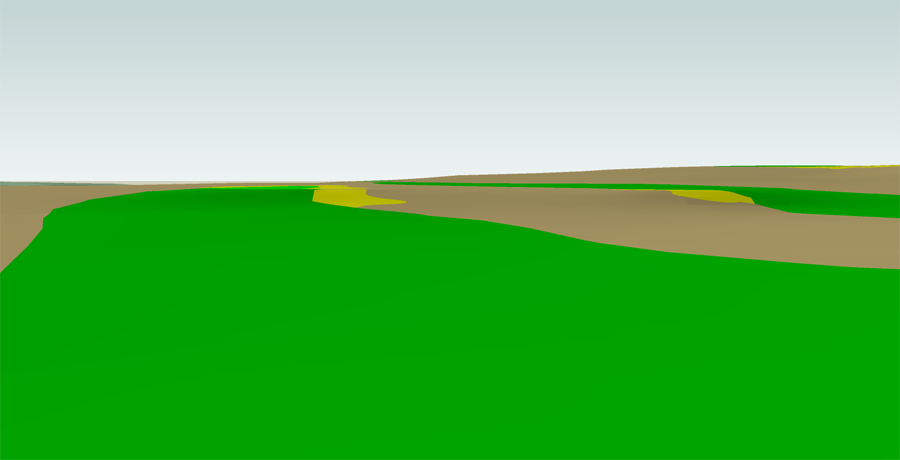
The green itself is long and generally slopes back to front.
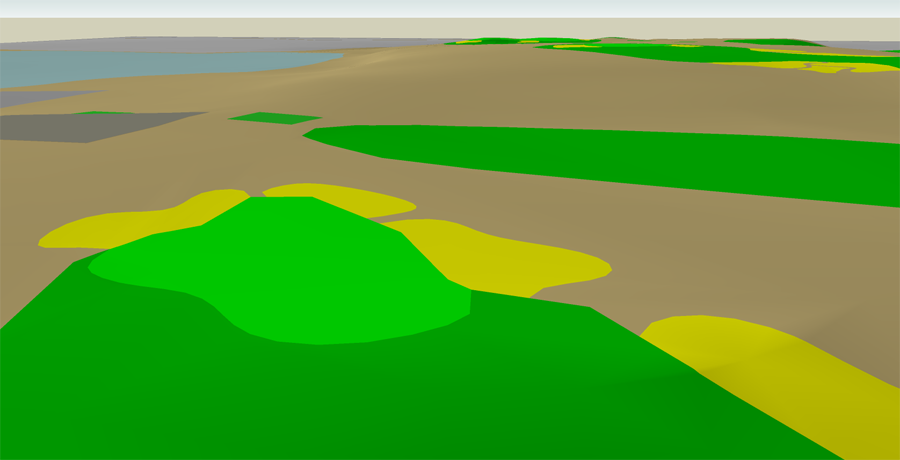
(Note from Charlie; Andy, I’ll probably try to post a few updated images here using a narrower field of view which offers a foreshortened perspective making it easier to see the things close and far away a bit better.)